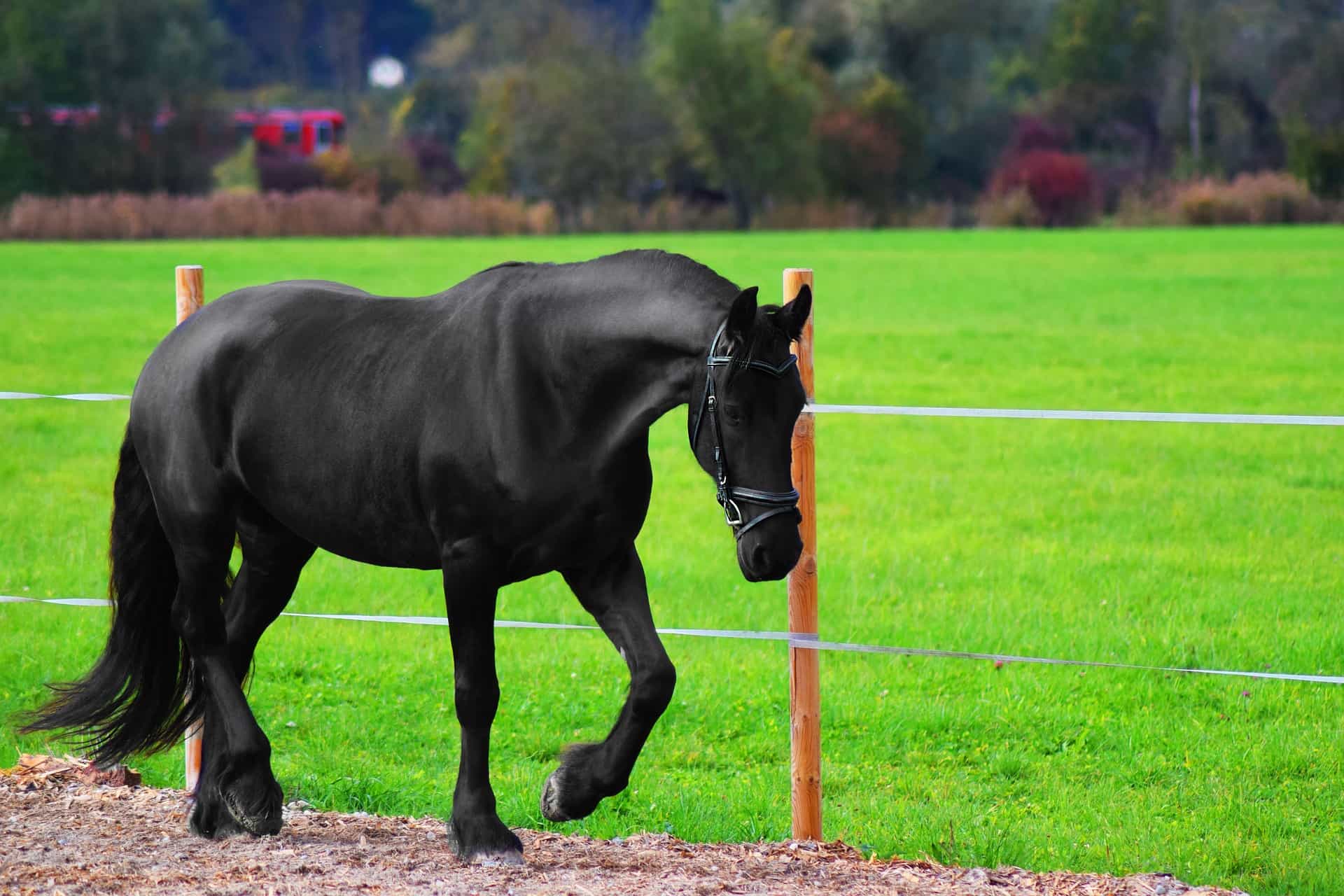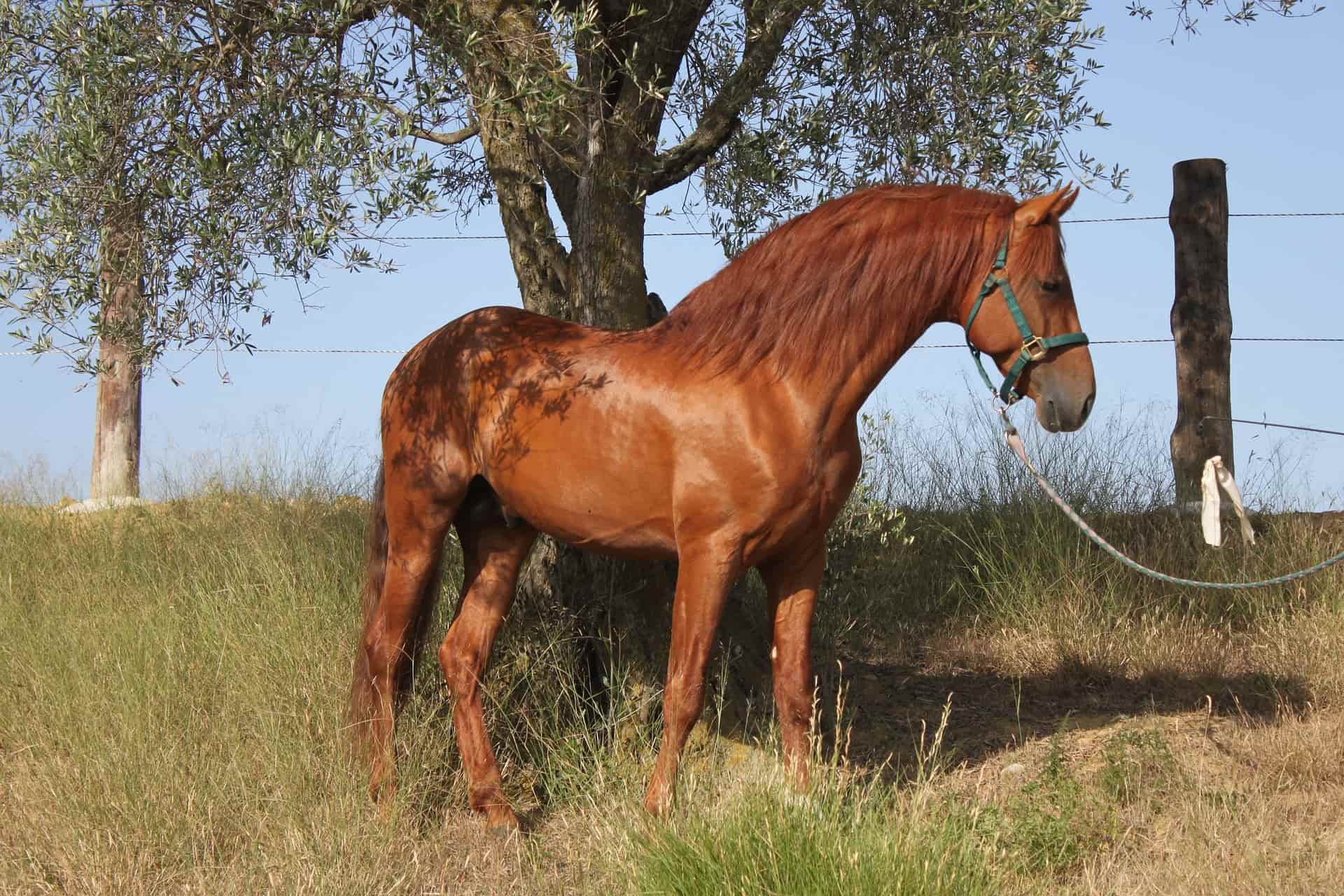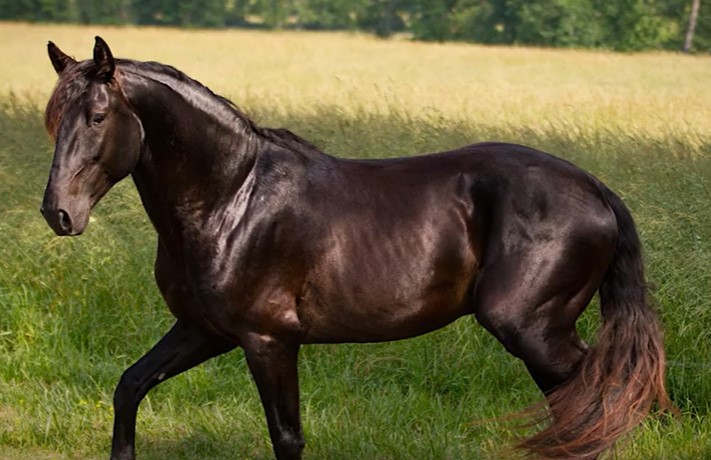Anna Sewell’s Black Beauty forever changed the way we perceive and appreciate these mysterious horses. Shrouded in an air of obscurity and mystique, black horse breeds have long captivated equine enthusiasts all over the world.
Objectively, the black horse bears no real difference attributable to its color when compared to other horses. Nevertheless, if you place a high estimate on appearances, these regal, noble black horse breeds might be exactly what you’re looking for.
Our Top 10 Black Horse Breeds
1. Tennessee Walking Horse
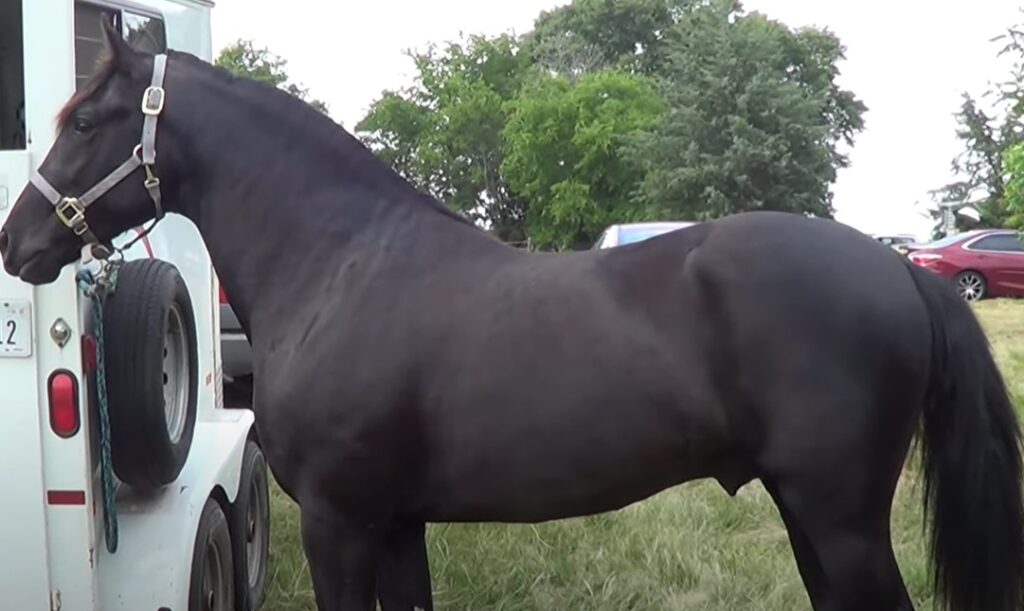
The mild mannered Tennessee Walking Horse is a gentle, gaited horse breed with a calm temperament. With coat colors like chestnut, dun, cream, silver, and dark bay widely available, the solid black Tennessee Walking Horse is definitely a sight to behold.
Its smooth, shiny black coat often comes flecked with white markings on the face or the legs. These stunning horses showcase beautifully long, slender legs and a regal elegance about them that easily captures attention during equestrian sports.
In terms of physical performance, the Tennessee Walker makes for wonderful pleasure and trail riding horses. Their four-beat gait pattern significantly reduces bounce on the saddle, allowing riders to enjoy a smooth ride.
2. Friesian Horses
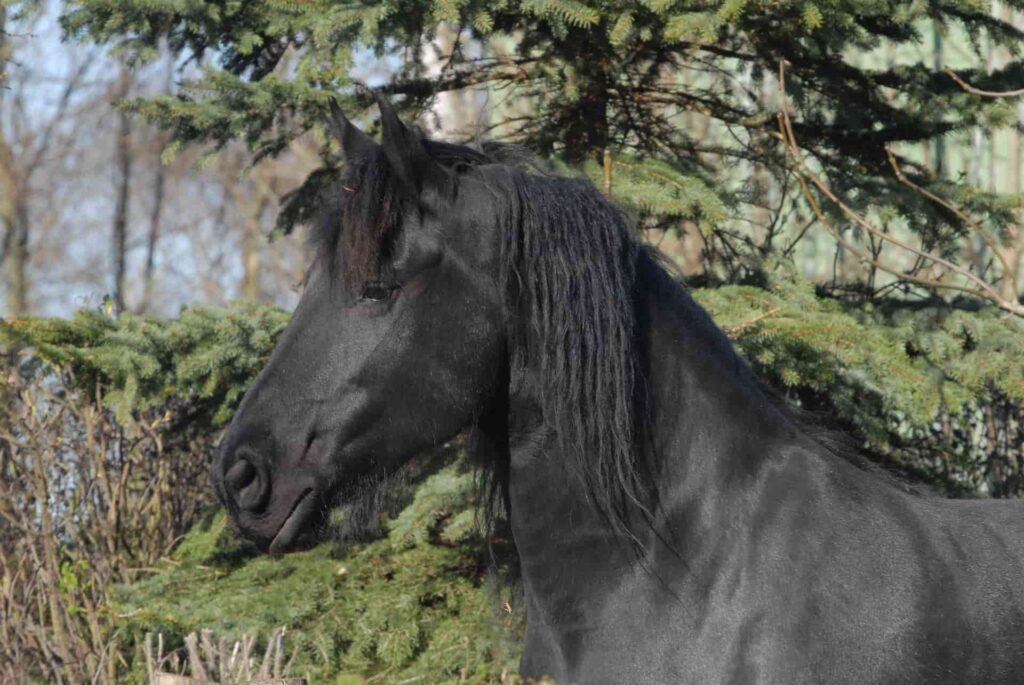
Typically, animals belonging to the Friesian horse family come as all black horses. Although you might find some Friesians showcasing dark brown or chestnut coloration, the vast majority of this breed touts a solid black coat. Combined with their domineering appearance, and it’s easy to see why the Friesian horse has made such a popular TV and movie horse.
Originally bred as draft horses, Friesian horses (or Belgian Black horses) boast large, muscular bodies and supreme plowing power. In the past, these horses would often find themselves working intensively laborious tasks on farms and ranches, moving ground and hauling heavy loads.
Today however, the Friesian horse has found purpose in many other areas. Although some are still employed as light draft horses, many a Friesian horse have made appearances on the silver screen. Their strong appearance and stoic persona have made them ideal extras in shows like Game of Thrones and Snow White and The Huntsman.
More: Interesting Facts About the Friesian Horse
3. Fell Ponies
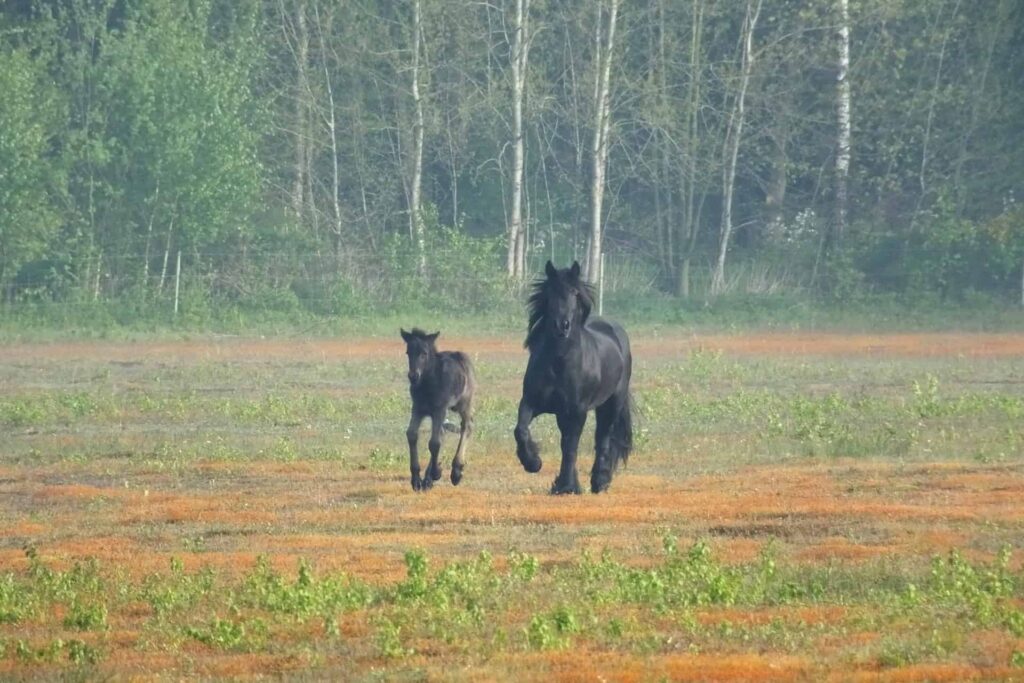
Before the Roman occupation, the Fell pony genuinely qualified as a pony with an average height of just about 12 hands. But as the Romans conquered the British Isles, the Fell pony was inevitably crossed with Roman horses. By the end of the occupation, the Fell pony measured an average of 13 hands.
Modern day Fell ponies tower to just a little over 14 hands, making them full-fledged horses and not just ponies. Coat colors for Fell ponies can include chestnut, brown, gray, and bay among many others. But solid black Fell ponies aren’t hard to come by. Today however, the Fell pony is considered an endangered breed, which is why the Fell Pony Society was formed in 1918 to protect and preserve the breed.
Commonly born with a solid black coat, the Fell pony is a black horse breed with an especially beefy build. Beautifully feathered legs add to its medieval aesthetic, and increase the demand for this gentle giant. With a steady demeanor and excellent stamina, the Fell pony makes an ideal choice for trekking and competitive driving.
4. Murgese Horses

The result of breeding between Barb and Arabian horses, Murgese horses get their name from the local of Murge in Apulia, Italy where the horses first originated. Much like other horse breeds, the Murgese horse comes in a wide range of colors. But the most common coats for this Italian breed include solid black and blue roan.
Towering up to 16 hands, the Murgese is a rugged workhorse that performs exceptionally well doing draft work. But because of their exceedingly hard hooves, the horses have found purpose in trekking over tough, treacherous terrain.
Most Murgese horses today are used for cross country riding. But because there are only about 1,500 breeding individuals in the Murgese horse registry, getting your hands on one from the breed may cost a small fortune. They’re certainly not the cheapest horses.
5. Dales Ponies
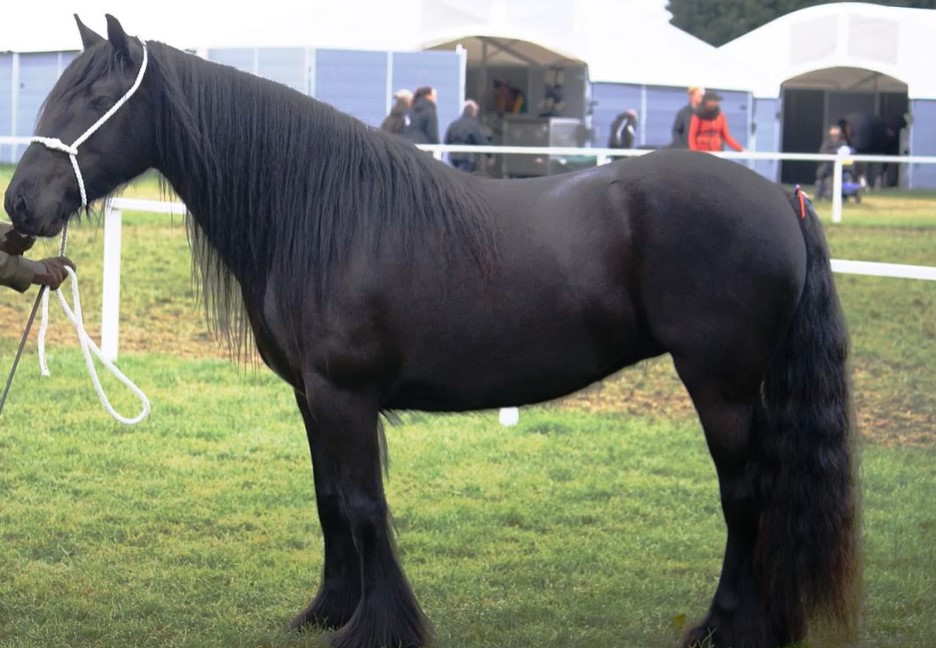
With just 300 breeding females in the Dales Pony UK registry, the breed is considered a rare type of horse and one of the few native British breeds. During World War II, the horse was nearly pushed over the edge of extinction in the mountains of Northern England. But because of post-war conservation efforts, the horse continues to recover from its close encounter with endangerment.
Standing an average of 14 hands, the Dales pony is a robust, compact horse with serious muscular mass. Ideal as an endurance racing horse or a trekking mount, the Dales Pony is a sensible, sure footed horse that’s rarely ever defiant or difficult to manage.
In terms of coat colors, the Dales Pony most commonly appears solid black. Nevertheless, its Registry also accepts bay, gray, and the entire spectrum of roan colors as official coat colors of the Dales pony breed.
6. Mérens Horse

Also called the Cheval de Mérens or Caballo de Merens, this horse breed’s history remains shrouded in mystery. Believed to date back to the prehistoric times, the Mérens horse is allegedly closely related to the Iberian or oriental horses of the same, distant time period.
Native to the Pyrenees and Ariégeois mountains of southern France, the Mérens horse were once almost pushed over the brink of extinction, much like the Sorraia horse and Dales pony.
At present, the original lineage of this French breed is said to be endangered. Unfortunately, there also aren’t any published resources that explain how many breeding individuals for Mérens horses exist today.
Stocky at about 14 hands, Mérens horses are compact yet elegant. Their snappy, energetic movements make them especially flashy as dressage horses. But because of their sheer endurance and hardiness, they shine best in competitive carriage driving.
Some have also found their way into therapeutic riding centers and as police horses in mountainous regions.
7. Lusitano Horse
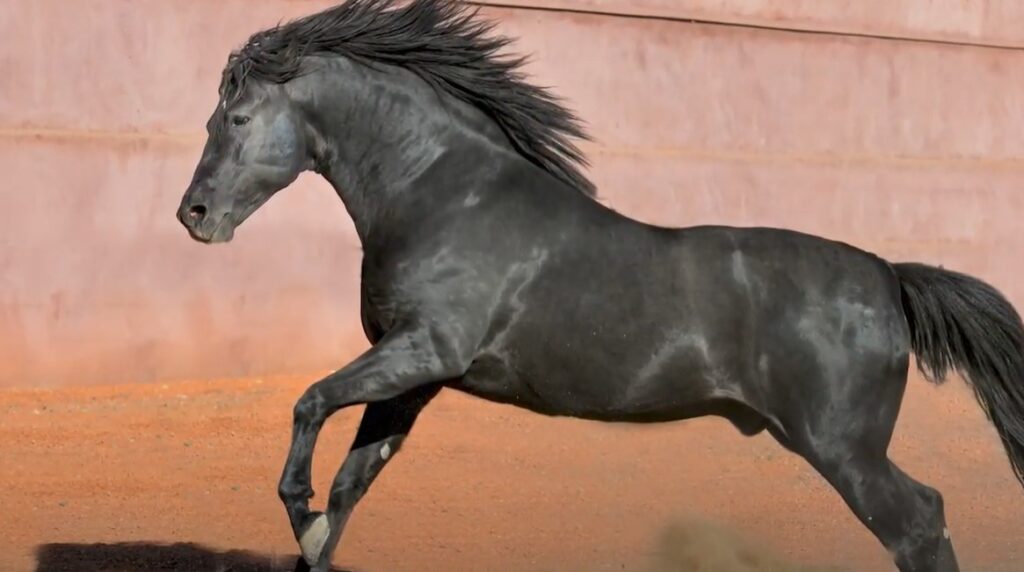
A close relative of the pure Spanish bred Andalusian horse, the Lusitano is a primitive horse breed that comes from ancient Iberia. The Portuguese horses date back as far as 20,000 BC and was selectively bred for the purpose of war. Present day Lusitano horses can trace back their lineage to the stud books that date back to the Middle Ages.
Exceedingly intelligent and undoubtedly brave, the Lusitano horse bears a calm temperament and all of the qualities you would expect from a war time horse. The coat color of a Lusitano can range from chestnut, to bay, to brown, and of course, black. Although they may come with white markings on the face and legs.
About 16,000 Lusitano horses exist on US soil as of writing, with a total of 60,000 Lusitanos all over the globe. Top performers in classic dressage and advanced dressage, these powerful horses also make for great leisure riding companions because of their steady personality and long patience.
8. American Quarter Horse
This all American horse dominates the American west, and represents the largest equine registry in all of the world. With over 6 million registered American quarter horses in their registry, the American Quarter Horse Association proudly brandishes its flagship horse as the most popular in the world.
Light on their feet, intelligent, and spunky, these beautiful horses outshine competition in racing and in rodeos. We’ve actually listed them as one of the best horse breeds for barrel racing. But for those who need effective farm horses, American Quarter horses have had a long, bright history as reliable homestead horses.
Chestnut, brown, and white are common solid colors for the American Quarter Horse. But the black horse commands particular attention because of its smooth sheen and deep, rich appearance especially when combined with the breed’s flowing manes.
9. Morgan Horse
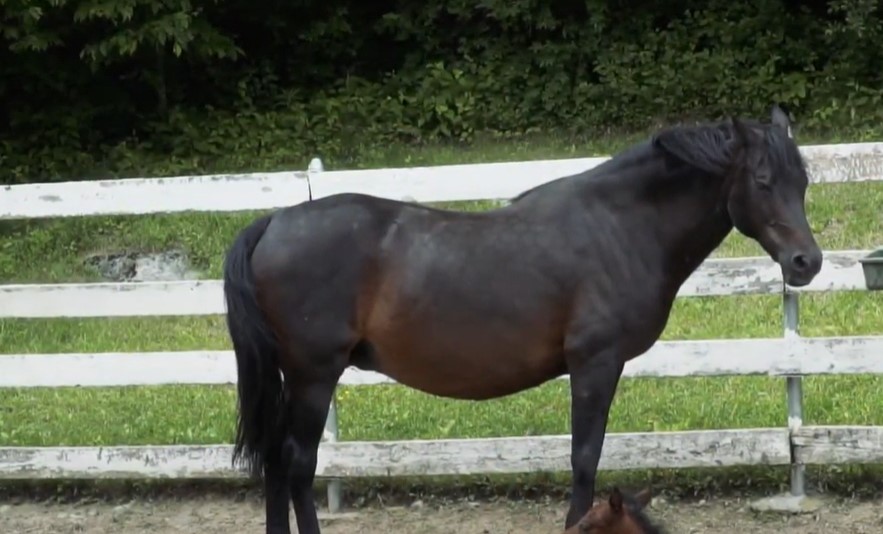
Dubbed ‘the horse that chooses you’, the Morgan horse is one of the most versatile horse breeds in existence. Cooperative and eager to learn, these horses demonstrate a trainability that’s hard to come by in the equine world.
Morgan horses come in a broad range of colors, but finding a black horse within the breed definitely isn’t that hard. Weighing over 1,000 lbs and stretching up to 15 hands, these sizeable black horses are compact and muscular. They carry their head high and may even appear more elegant and regal next to most other breeds.
Attentive and poised, most horses of the Morgan breed take home gold medals from dressage competitions, show jumping, Western pleasure, and of course, endurance riding. Historically, the Morgan horse was used for pulling carriages as it was the most popular horse during the time of the American Civil War.
10. Percheron Horse
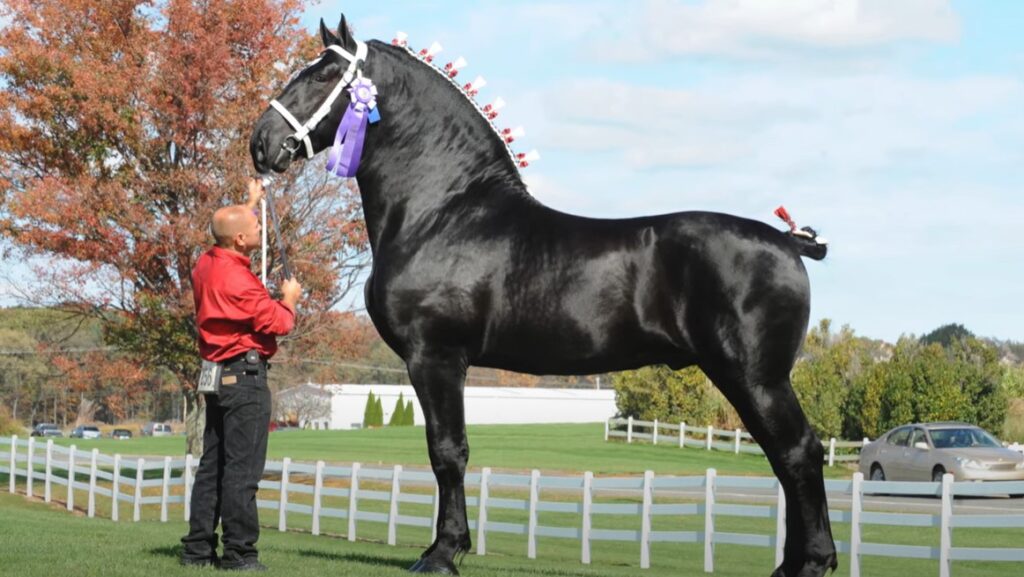
A massive horse breed originating from Western France, the Percheron is a draft horse with short, muscular legs and a beefy body. The compact draft horse usually has a coat color of gray or black, earning it significant popularity as a noteworthy black horse in its region.
Quick witted and willing to work and labor, the Percheron black horse is a no-nonsense animal that eagerly gets started on a task without defiance or stubbornness. Large, powerful, and stead, the Percheron horse might not be the fastest of the breeds of horses around, but they’re definitely reliable, stable, and consistent.
In years past, the Percheron horse was closely monitored as a rare, endangered breed of horse. But thanks to the efforts of the Livestock Conservancy, the animal successfully graduated from endangered status. Today however, protection efforts continue in order to preserve the horse and to keep it from dipping back into endangered territory.
Frequently Asked Questions
What breed of horses are exclusively black?
Although there’s always a possibility to produce a horse that’s a different color even when crossing parents of the same breed, a few breeds of horses often produce a pure black horse. The Friesian horse, Murgese, and the Merens will almost always produce black foals exclusively.
How rare is a black horse?
That depends. Some breeds like the Friesian produce black offspring exclusively. But because Friesians themselves are hard to come by, they’re generally a rare breed. Then there are many horse breeds like the Mustang which may not produce solid black horses too often, but sell for just $25 each because they’re so common.
All of that said, assessing the rarity of a black horse depends on the rarity of the breed and the occurrence of a solid black coat in that specific family of horses. In some cases, a black horse may be rare if it doesn’t often occur in a specific breed.
What is the most beautiful black horse?
As in most cases, beauty is in the eye of the beholder. Every black horse is beautiful in its own right, but your specific preferences may produce a bias in what you perceive to be the most appealing black horse breeds.
Generally, those in the pony family like Dales ponies and the extinct Scottish Galloway pony appear more stocky, muscular, and compact. But if you prefer horses with long, slender frames, straight faces, and elegant, graceful strides, the Tennessee Walking Horse or Quarter Horse might be better suited to your taste.
Are dark liver chestnuts black horse breeds?
No. Dark liver chestnut horses and dark bay horses do not have true black pigments in their hair strands. This stands contrary to black horses that have solid black pigment in their hair, although these color varieties may appear similar to the naked eye.
Do black horses fade?
Depending on the horse breed, some black horse breeds may fade over time. In some cases keeping a horse black for its entire lifespan may require that you protect it from direct, harsh sunlight. In cases where that’s not possible, a black horse may turn chestnut or brown over time.
Sometimes, you might find yourself caring for a gray horse. Although the horse black coat might seem normal as a young foal, this horse may lose all pigment in its fur over time, turning a gray color as it reaches adulthood.
Once You Go Black
There’s no denying the natural charm and beauty of black horse breeds. And while many of these horse breeds might be hard to come by, they remain available to those with a sufficient budget.
But whether or not you plan to buy a black horse breed, or if you’re just admiring their beauty, it’s important to highlight how many of these animals were pushed near to extinction. By taking part in the proper initiatives, you can be an instrument towards protecting these black horse breeds and keeping them around for years down the line.
